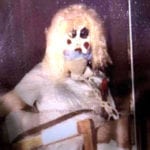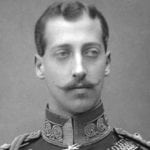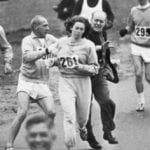 Technology
Technology  Technology
Technology  Humans
Humans 10 Everyday Human Behaviors That Are Actually Survival Instincts
 Animals
Animals 10 Animals That Humiliated and Harmed Historical Leaders
 History
History 10 Most Influential Protests in Modern History
 Creepy
Creepy 10 More Representations of Death from Myth, Legend, and Folktale
 Technology
Technology 10 Scientific Breakthroughs of 2025 That’ll Change Everything
 Our World
Our World 10 Ways Icelandic Culture Makes Other Countries Look Boring
 Misconceptions
Misconceptions 10 Common Misconceptions About the Victorian Era
 Mysteries
Mysteries 10 Strange Unexplained Mysteries of 2025
 Miscellaneous
Miscellaneous 10 of History’s Most Bell-Ringing Finishing Moves
 Technology
Technology Top 10 Everyday Tech Buzzwords That Hide a Darker Past
 Humans
Humans 10 Everyday Human Behaviors That Are Actually Survival Instincts
 Animals
Animals 10 Animals That Humiliated and Harmed Historical Leaders
Who's Behind Listverse?

Jamie Frater
Head Editor
Jamie founded Listverse due to an insatiable desire to share fascinating, obscure, and bizarre facts. He has been a guest speaker on numerous national radio and television stations and is a five time published author.
More About Us History
History 10 Most Influential Protests in Modern History
 Creepy
Creepy 10 More Representations of Death from Myth, Legend, and Folktale
 Technology
Technology 10 Scientific Breakthroughs of 2025 That’ll Change Everything
 Our World
Our World 10 Ways Icelandic Culture Makes Other Countries Look Boring
 Misconceptions
Misconceptions 10 Common Misconceptions About the Victorian Era
 Mysteries
Mysteries 10 Strange Unexplained Mysteries of 2025
 Miscellaneous
Miscellaneous 10 of History’s Most Bell-Ringing Finishing Moves
10 More Evil Men
This third list of evil men completes our series on the dark side of men throughout history (ancient and recent). If you think of other men who are not on any of the other lists of evil men be sure to mention them in the comments for others to discuss. Some of the entries have been discussed on Listverse before, but in different contexts, so it is fitting for them to be included here.
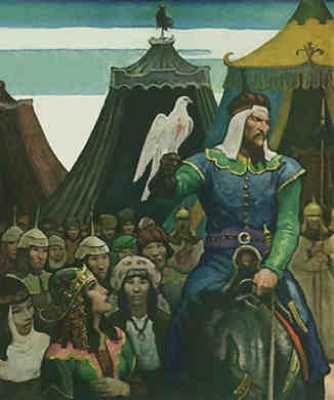
The Mongol Temjin, known to history as Genghis Khan (born 1162) was a warrior and ruler who, starting from obscure and insignificant beginnings, brought all the nomadic tribes of Mongolia under the rule of himself and his family, in a rigidly disciplined military state. Massacres of defeated populations, with the resultant terror, were weapons he regularly used. His Mongol hordes killed off countless people in Asia and Europe in the early 1200s. When attacking Volohoi, Khan convinced the city commander that Mongols would stop attacking if the city sent out 1,000 cats and several thousand swallows. When he got them, Genghis had bits of cloth tied to their tails and set the cloth on fire. The cats and birds fled back to the city and ended up setting hundreds of fires inside the city. Then Genghis attacked and won. On another occasion, Mongols rounded up 70,000 men, women and children, and shot them with arrows. Genghis told his comrades: “Man’s greatest good fortune is to chase and defeat his enemy, seize his total possessions, leave his married women weeping and wailing, ride his gelding, use his women as a nightshirt and support, gazing upon and kissing their rosy breasts, sucking their
lips which are as sweet as the berries of their breasts. ”
Discover the strange ways this man influenced the world we live in today! Buy Genghis Khan and the Making of the Modern World at Amazon.com!
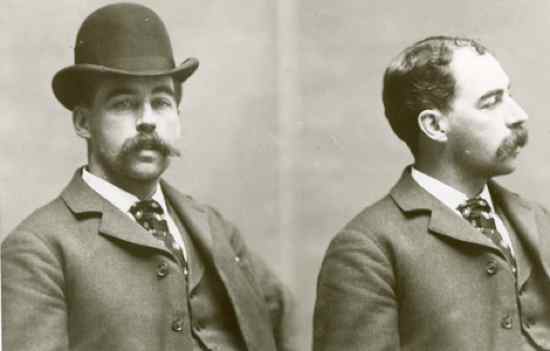
Herman Webster Mudgett was born in Gilmanton, New Hampshire, on May 16, 1816. Mudgett graduated from medical school in 1884. During 1886, Holmes came across Dr. E. S. Holton’s drugstore. While Dr. Holton had cancer, his wife ran the store. Holmes got a job there and soon convinced the wife to sell him the store, telling her that she and Dr. Holton could still live in the upstairs apartment. Once Dr. Holton died from cancer, his wife mysteriously disappeared. He told neighbors and relatives that she decided to live in California. Holmes purchased a lot across from the drugstore, where he built his three-story “Castle”. He soon opened it as a hotel. After the completion of the hotel, Holmes selected mostly female victims from among his guests. He then tortured and killed them. Some were locked in soundproof bedrooms fitted with gas lines that let him gas them at any time. Some victims were locked in a huge soundproof bank vault near his office, where they were left to die. The victims’ bodies were dropped by chute to the basement, where some were dissected, stripped of flesh, crafted into skeleton models, and then sold to medical schools. On May 7, 1896, Holmes was hanged at Moyamensing Prison. While he confessed to 27 murders, of which nine were confirmed, his actual body count could be as high as 250.
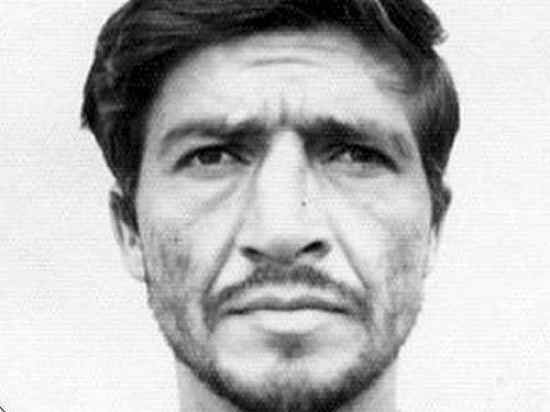
Luis Garavito was mentioned on the “Another 10 Evil Men” list, and it’s unknown who killed more people, Garavito or Lopez. But Pedro Lopez deserves a spot. Called “the Monster of the Andes,” he was born to a 13 year old prostitute mother, in 1948. Lopez was picked up by a pedophile while still young, and was repeatedly raped before he was taken away by an American family and enrolled in a school for orphans. After being sodomized by a teacher, he ran away and found himself in prison at 18. There, Lopez was gang-raped and allegedly killed three of the rapists while still incarcerated. After his jail sentence was complete, his killing spree began. He claimed that, by 1978, he had killed more than 100 young girls, and later he confessed to more than 300 murders. It is not known if he is alive or dead.
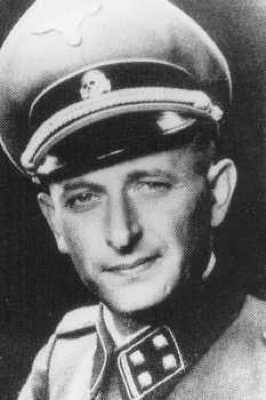
Everybody wanted Eichmann on the “Another 10 Evil Men’ list, so here he is. Eichmann was the organizational talent that orchestrated the mass deportation of Jews from their countries into waiting ghettos and extermination camps. A prodigy of Heydrich, he is sometimes referred to as “the architect of the Holocaust”. He learned Hebrew and studied all things Jewish in order to manipulate Jews, through his power of coercion, to leave their occupied territories and possessions in favor of a better life in the ghettos. At the end of the war, he was doing the same to Hungarian Jews and, if it wasn’t for the intervention of Raoul Wallenberg, the number of victims of the holocaust would have been much higher. He fled Germany at the end of the war via a ratline to south America, and was captured by the Mossad in Argentina. He was extradited to Israel and executed by hanging in 1962, after a highly publicized trial.
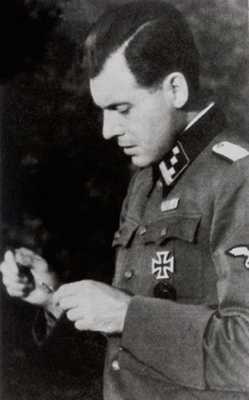
Mengele initially gained notoriety for being one of the SS physicians who supervised the selection of arriving transports of prisoners, determining who was to be killed and who was to become a forced laborer. However, he is far more infamous for performing grisly human experiments on camp inmates, for which Mengele was called the “Angel of Death”. His crimes were evil and many. When it was reported that one hospital block was infested with lice, Mengele gassed every single one of the 750 women assigned to it. Mengele used Auschwitz as an opportunity to continue his research on heredity, using inmates for human experimentation. He was particularly interested in identical twins. Mengele’s experiments included attempts to take one twin’s eyeballs and attach them to the back of the other twin’s head, changing eye color by injecting chemicals into children’s eyes, various amputations of limbs, and other brutal surgeries. He survived the war and, after a period living incognito in Germany, he fled to South America, where he evaded capture for the rest of his life, despite being hunted as a Nazi war criminal.
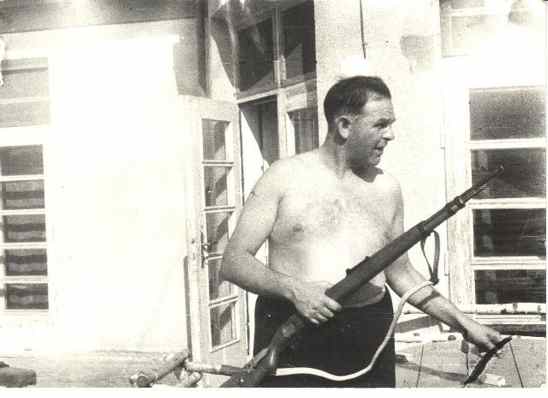
Born in Vienna, December 11, 1908, Amon Goeth joined a Nazi youth group at seventeen, moved to a nationalist paramilitary group at nineteen, and, in 1930, when he was twenty-two, joined the – then outlawed – Austrian Nazi Party. He was designated No. 510,964, and, in the same year he joined the S. S., Amon Goeth fled to Germany when he was pursued by Austrian authorities for crimes involving explosives. His superior officers admired his devotion, gave him glowing personal evaluations and transferred him to the S. S. A son was born in 1939, and died of unexplained causes less than a year later. In 1943, on Yom Kippur, an important holiday of the Jewish year, Goeth and his SS-men took 50 Jews from the barracks and shot them. At Plaszow, Amon Goeth passed his mornings by using his high-powered, scoped rifle to shoot at children playing in the camp. After the war, he was hanged by the Supreme National Tribunal of Poland, for murdering thousands of people. Rena Finder, a Jew then 14 years old, later remembered Goeth as “[…]the most vicious and sadistic man”. Another Jew, Poldek Pfefferberg, recalled Goeth this way: “When you saw Goeth, you saw death. ”
Get inside the heads of history’s most depraved humans with Serial Killers: The Method and Madness of Monsters at Amazon.com!
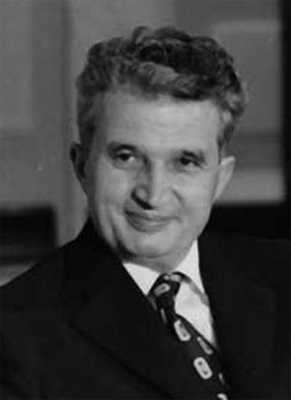
Nicolae Ceausescu was dictator of Romania from 1974 to 1989. Ceausescu decreed that all women must bear five children. Due to terrible food shortages, many women were unable to support their “decree babies. ” They turned them over to state-run orphanages. More than 150,000 children were crowded into these institutions. Many died of malnutrition and disease. Others ran away, becoming homeless beggars. Ceausescu also forbade testing of the nation’s blood supply for AIDS. Through transfusions and shared vaccinations needles, thousands of orphans contracted AIDS. Eventually, Romania had over half of Europe’s cases of childhood AIDS. He was finally executed in 1989, by revolutionaries, along with his wife.
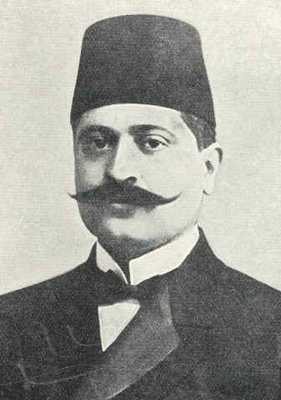
Speaking of the Ottomans, Talat Pasha was the key architect of the Armenian genocide, one of the largest genocides in modern history. Over 1 million people were massacred in the span of 2 years. A member of the Young Turks, Talat rose up and became one of the three Pashas who ruled the Ottoman government in 1913, until the end of the disastrous First World War. Many Muslim Turks came to see the rise in nationalism of the Christian Armenians as a threat to the existence of the Ottoman state. Programs had already been installed against Armenians in previous years, with possibly hundreds of thousands dying. 30,000 died in the Adana massacre of 1909. Once entering World War One, the Ottoman’s endeavor ended in total failure. Russian and Armenian forces set up an Armenian mini-state in 1915, and thus Talat Pasha sought to punish them. Security forces rounded up 250 Armenian intellectuals and leaders in Istanbul in 1915, and eventually executed them. After passing a Deportation Law, Pasha ordered deportations and executions to be carried out against the whole Armenian population. During the deportations, conditions were deplorable and men were routinely separated from the rest and executed. Many prisoners were tortured and were victims of gruesome medical experiments. More died of hunger and thirst. In some instances victims would be crucified in imitation of Jesus, as the perpetrators would say: “Now let your Christ come help you!” Others would have red-hot irons and pincers applied to their flesh. Out of a population of 2. 5 million Armenians, between 1 and 1. 5 million perished in this period. After the Ottoman collapse, Talat Pasha fled to Berlin and was subsequently murdered there, in 1921. His assassin was an Armenian genocide survivor.
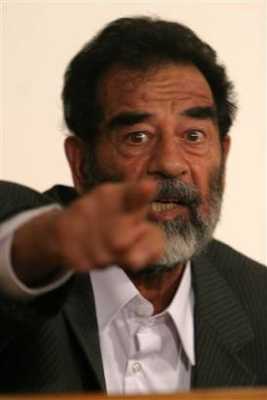
Saddam, which means “he who confronts,” was born in a village called al-Auja, outside of Tikrit in northern Iraq. Either just before or just after his birth, his father disappeared from his life. Some accounts say that his father was killed; others say he abandoned his family. Saddam’s mother soon remarried, to a man who was illiterate, immoral and brutal. Saddam hated living with his stepfather and as soon as his uncle, Khairullah Tulfah (his mother’s brother), was released from prison in 1947, Saddam insisted that he go and live with his uncle. Saddam didn’t start primary school until he moved in with his uncle at age 10. At age 18, Saddam graduated from primary school and applied to military school. Joining the military had been Saddam’s dream and when he wasn’t able to pass the entrance exam he was devastated. (Though Saddam was never in the military, he frequently wore military-style outfits later in life. )
Saddam then moved to Baghdad and started high school, but he found school boring and enjoyed politics more. Saddam’s uncle, an ardent Arab nationalist, introduced him to the world of politics. Iraq, which had been a British colony from the end of World War I until 1932, was bubbling with internal power struggles. One of the groups vying for power was the Baath Party, of which Saddam’s uncle was a member. In 1957, at age 20, Saddam joined the Baath Party. He started out as a low-ranking member of the Party, responsible for leading his schoolmates in rioting. However, in 1959, he was chosen to be a member of an assassination squad. On October 7, 1959, Saddam and others attempted, but failed, to assassinate the prime minister. Wanted by the Iraqi government, Saddam was forced to flee. He lived in exile in Syria for three months and then moved to Egypt, where he lived for three years. In 1963, the Baath Party successfully overthrew the government and took power, which allowed Saddam to return to Iraq from exile. While home, he married his cousin, Sajida Tulfah. However, the Baath Party was overthrown after only nine months in power and Saddam was arrested in 1964, after another coup attempt. He spent 18 months in prison, where he was tortured, before he escaped, in July 1966. During the next two years, Saddam became an important leader within the Baath Party.
In July 1968, when the Baath Party again gained power, Saddam was made vice-president. Over the next decade, Saddam became increasingly powerful. On July 16, 1979, the president of Iraq resigned and Saddam officially took the position. Saddam Hussein ruled Iraq with a brutal hand. He used fear and terror to stay in power. From 1980 to 1988, Saddam led Iraq in a war against Iran which ended in a stalemate. Also during the 1980s, Saddam used chemical weapons against Kurds within Iraq, including gassing the Kurdish town of Halabja which killed 5,000, in March 1988. In 1990, Saddam ordered Iraqi troops to take the country of Kuwait. In response, the United States defended Kuwait in the Persian Gulf War, and on March 19, 2003, the United States attacked Iraq. It was during the fighting that Saddam fled Baghdad. On December 13, 2003, U. S. forces found Saddam Hussein hiding in a hole in al-Dwar, near Tikrit. After a trial, Saddam Hussein was sentenced to death for his crimes, and on December 30, 2006, Saddam Hussein was executed by hanging.
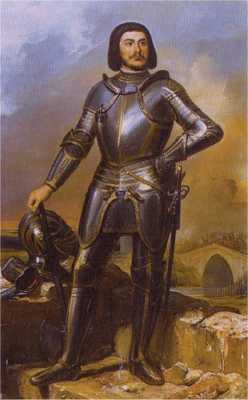
Rais was a Breton who fought against the English, often serving alongside Joan of Arc. A year after Joan was burned at the stake, Rais retired from military service and returned to his family’s castle, at Machecoul. From there, Rais began a campaign of sadistic sex murders, killing between 60 and 200 children. He preferred boys between the ages of 6 and 18. His victims were generally blue-eyed and blond-haired, and were usually kidnapped from the village of Machecoul and the surrounding areas, or lured to his castle. His first victim was a 12-year-old messenger who was hanged by his neck on a metal hook and raped before being put out of his misery. More and more children started to disappear and suspicion arose. Unfortunately, the locals were too terrified to go up against one of the most powerful men in France. Rais had a specially built chamber where he would restrain his victims while he proceeded with his grotesque sexual acts. He would kill them with a variety of methods, which included dismemberment, decapitation and disembowelment. He enjoyed watching them die, sometimes even laughing. After some difficulty, a case was finally brought up against him. Rais stated at his trial that he admired the heads and body parts of his more beautiful victims. He was arrested in September of 1440, and indicted on 34 counts of murder. He would eventually confess to the murders under the threat of torture. Rais was found guilty of murder, sodomy and heresy and was hanged and then burned on October 16, 1440, along with two of his servants. Rais was granted the right of confession after expressing remorse. He refused to admit he was a devil worshiper and professed the strength of his faith. Gilles de Rais would become one of the first known serial killers in history. The guilt and conscience that he would show, when not taken over by the urge to murder, only confirmed how depraved and mentally disturbed this man was.




